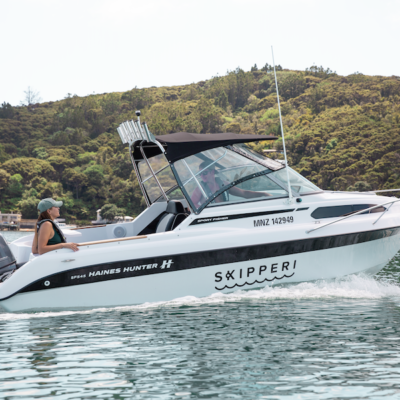Appeal for new wheelchair
The inventor and manufacturer of a revolutionary new wheelchair has launched a public appeal to develop it further and build 10 prototypes.
1.3K
The inventor and manufacturer of a revolutionary new wheelchair has launched a public appeal to develop it further and build 10 prototypes.
Kevin Halsall’s Ogo wheelchair was a finalist at the New Zealand Innovators’ Awards in Auckland last year and also won the BCC (Building Clever Companies) Innovate 2015 grand prize of $10,000.
The invention blends cutting edge electronics with innovative body driven control which frees the user’s hands to do anything they want.
As a result of publicity in 2015, Kevin received thousands of inquiries from around the world from people interested in either purchasing, investing in or distributing his machine.
However by launching his appeal for $240,000 on Indiegogo, the largest global site for crowdfunding and fundraising, Kevin wants to give as many people as possible the opportunity to fund what they can afford, enabling him to take the development to the next level.
He explains that, by keeping costs down, he can make his machine available to millions around the world at the lowest possible cost. “Our goal is to change as many lives as we can,” Kevin says.
The crowd funding campaign, launched on March 8, will run for 30 days and Kevin is confident he’ll attract the money required.
“It’s an achievable amount and with it we’ll build 10 prototypes, five for sale as part of the crowd funding campaign and the other five to be located in major centres around New Zealand for people to try out,” he says.
Kevin, from his Otaki base, wants to start production before the end of the year because he’s aware there are 11,000 disabled people in New Zealand alone who rely on a wheelchair for mobility and 69 million wheelchair users worldwide. His interest in building the machine began nearly five years ago when he observed how a close friend, Marcus Thompson, a paraplegic, struggled in his conventional wheelchair, which exhausted his energy and stamina.
Kevin’s challenge was to build a wheelchair that was easier for Marcus and the disability community of New Zealand. His research led him to a self-balancing, battery powered electric vehicle which has censors in its base. These censors enable the driver to move forward or backwards by shifting their weight in the direction they want to move.
He spent hundreds of hours experimenting until he designed and manufactured a sturdy wheelchair that could be manoeuvred by the body, leaving the hands free to do whatever the driver wanted.
“By utilising self-balancing technology, I produced an active, moving seat control, operated by upper body mobility and core muscle strength,” Kevin says. “When the driver leans forward the wheelchair moves forward, when he or she leans back the wheelchair reverses. When they lean to the side, the wheelchair swivels in the new direction.”
In Marcus’s case he can carry and move objects, power along the undulated beach at up to 20 kph and, in particular, mow his lawns. “It’s therapeutic and healing for the soul. With my hands free, I’m able to use my whole body to carry out tasks again,” he says.
However to add extra safety and security, the Ogo comes complete with a thumb controlled joystick. By activating a switch, it locks the left and right movement of the seat and transfers the steering control to the joystick for a more conventional feel.
Since the machine was publicised last year, Kevin has tested it for people with a wider range of disabilities. With approval from ACC and occupational therapists, he’s explored ways to adjust the Ogo for people with spina bifida, quad amputees, tetraplegics and stroke victims.
“We wanted to test the limits of the machine to ensure it can be used by the greatest number of people,” he says. “The changes include adaptations to the seat and more electronic controls.”
Those improvements will be installed in the machine through the finance he generates with crowd funding.
“I don’t want to make it an exclusive product. Through a rewards based campaign, people know that, by contributing what they can, they’ll be able to purchase an Ogo at a price they can afford,” Kevin comments.
“By the end of the decade I’d like to see thousands of wheelchairs coming off the production line, changing lives for good throughout the world.”
To access the Indiegogo site, go to the Ogo website http://ogotechnology.com






